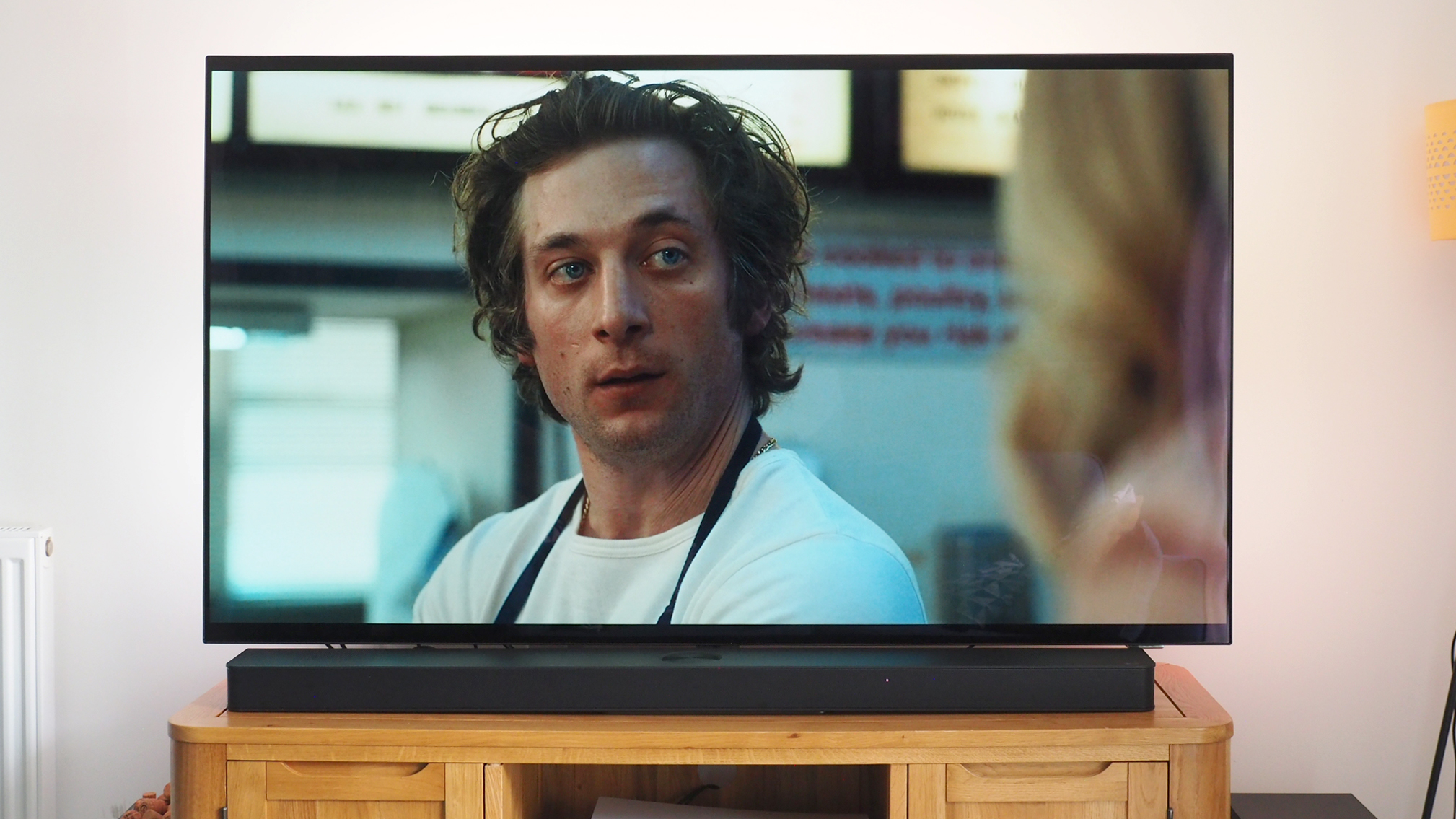
If you're on the hunt for one of the best OLED TVs then you're in for a treat: this year has been bountiful in delivering super sets from a wide range of manufacturers. Philips' OLED 809, on review here in its 65-inch size, may have arrived towards the end of 2024's queue – but it's an example of why waiting can be extra rewarding.
The Philips OLED 809 – which replaces the short-lived 808 model (that being one to avoid, as I experienced unworkable audio sync issues from that set) – competes with the likes of LG's OLED C4, Panasonic's MZ1500 and Sony A80L in offering a comparable panel, but better-integrated sound, and the addition of Ambilight (read here why that's no gimmick).
I lived with the Philips OLED 809 for four weeks for this review – including during the now-concluded 2024 Olympic Games – using the set at home to get a real taste of exactly what it can (and can't) do. While there are minor downsides – Google TV and lack of UK catch-up apps, here's looking at you – the overall picture and sound quality marks this Philips as a competitively priced panel with plenty of perks to its name.
Philips OLED 809 review: Price & Availability
As the OLED 809 is one tier down in Philips' range – the top-flight models are the OLED 909 and the free-standing OLED 959 – it's also a step down in price. The model also comes in far more size options than the typical large-panel top dogs.
Here, I'm reviewing the 65-inch version, priced at £2099 (a $2695 equivalent – noting that Philips doesn't sell in the USA and you won't find these sets in Australia either). The OLED 809 can also be purchased in 42-inch (£1399), 48-inch (£1399 – yes, the same price as the smaller model), 55-inch (£1599), and 77-inch (£3499) sizes. Check out the shopping widget embedded above for the current best prices.
In terms of the market that's really competitive. I'll get to the 'also consider' alternatives as a post-verdict sign-off, and also contextually throughout this review, but right now equivalent-size models from LG, Sony and Panasonic will cost you around the same or even more. And none of those offer Ambilight.
Philips OLED 809 review: Features & What's New?
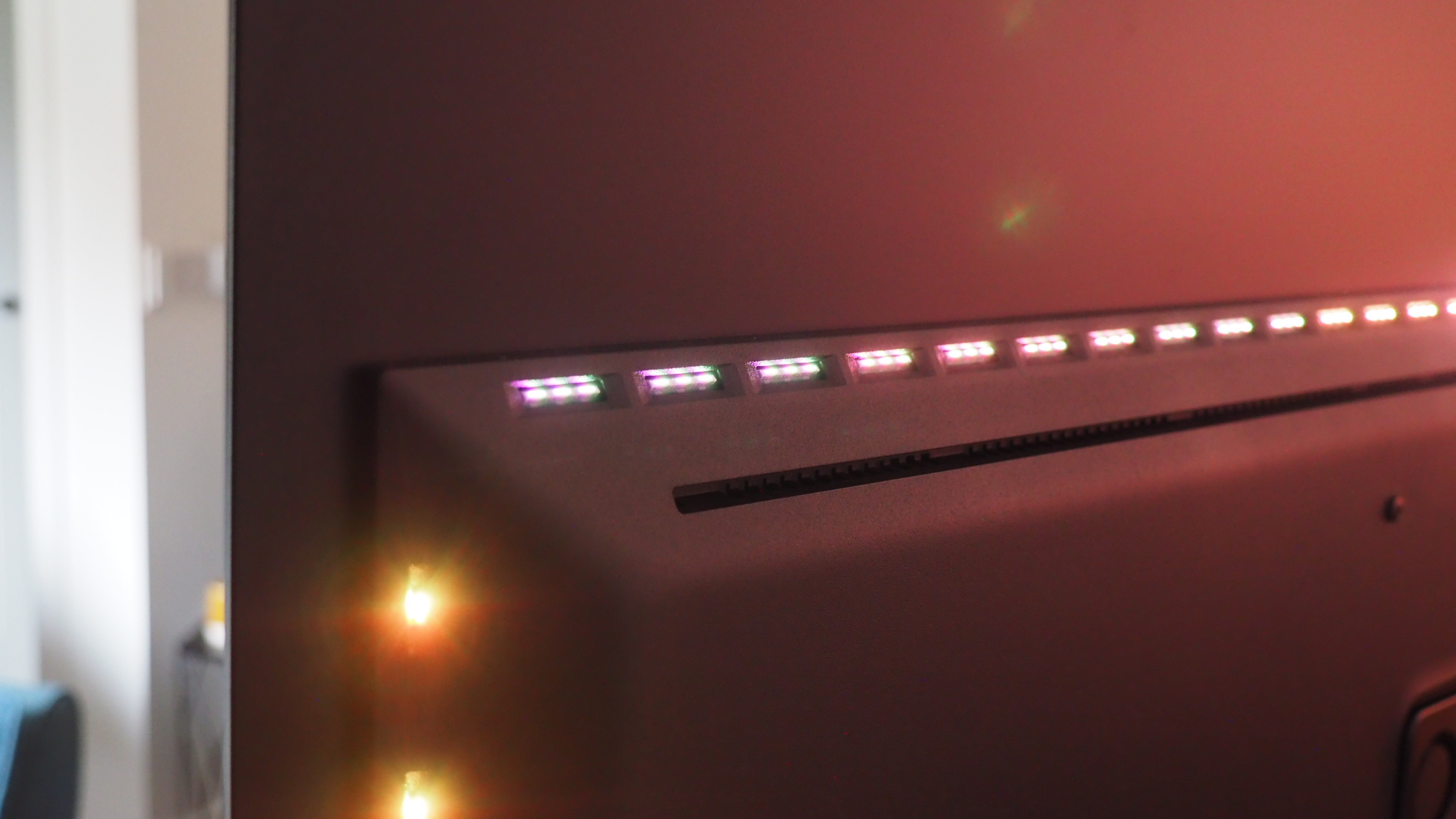
Chances are you won't have had the opportunity to buy the Philips OLED 808 predecessor, as it arrived late to market and, mere months later, this OLED 809 replacement has arrived – and all the better for it!
There are a number of subtle yet crucial changes in the OLED 809: the P5 AI processor is in its 8th Gen form, for example, upgrading the previous 7th Gen version. That brings with it a maximum 144Hz refresh rate in Game Mode, which the previous model lacked (not much can benefit from it, though, it's for future-proofing and PC gamer rigs). Oh, and that 77-inch model is a new larger size for this series.
Otherwise it's pretty much business as usual, albeit in a more refined package: while I've found the 809's Google TV implementation to be sometimes irksome, it's better than I found in the previous model, with automatic HDMI switching largely bypassing the need for the home screen. There are no UK catch-up apps available there anyway, so you'll likely be relying on your best streaming device to deliver the best streaming services for your viewing pleasure.
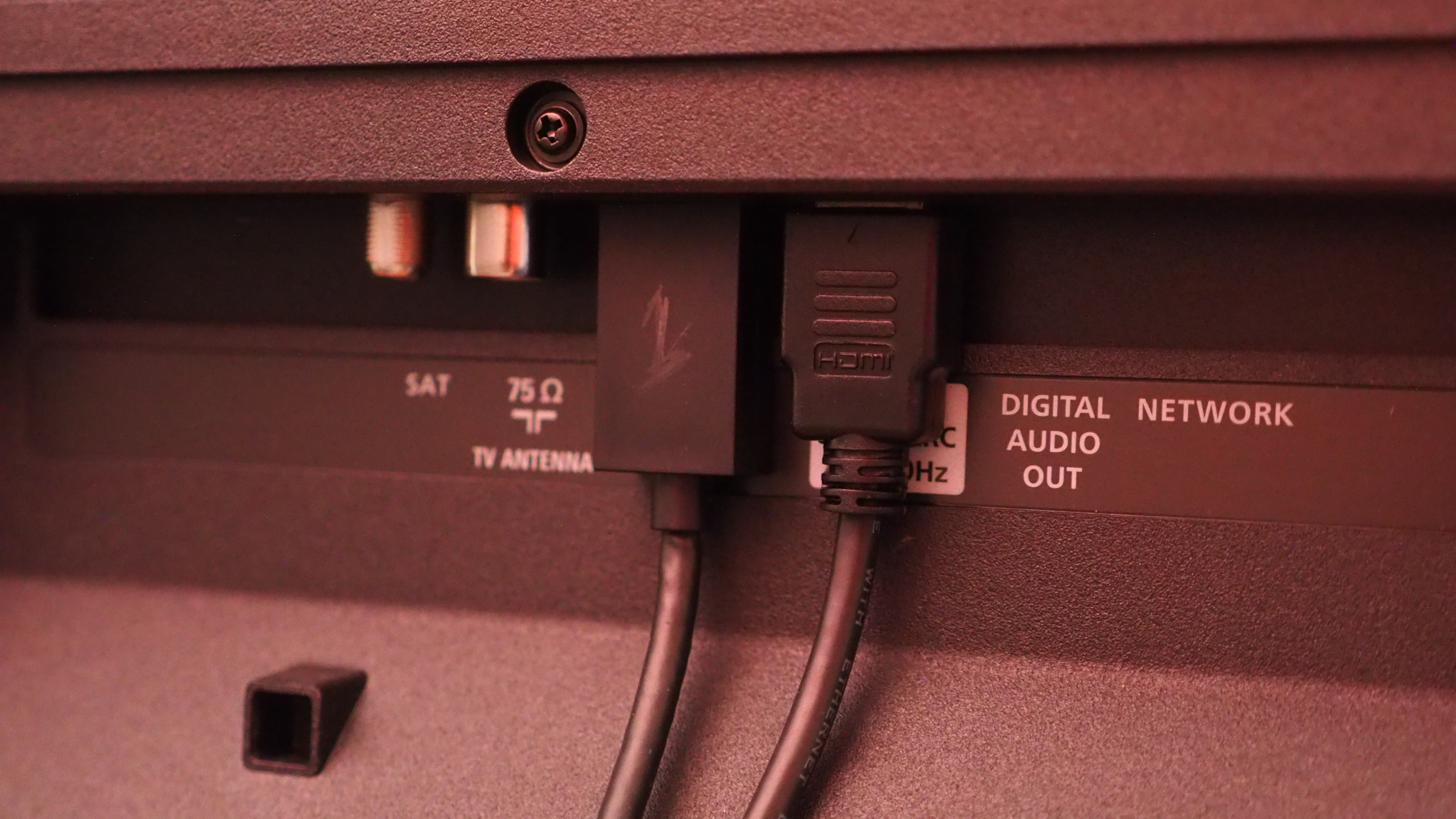
While the Philips OLED 809 features four HDMI ports, only two of them are the 2.1 standard (read more about that here) – but that's typical of most models from Philips and its competition. As one of those is also the HDMI eARC port (read more about enhanced Audio Return Channel here), you'll be a little restricted if you're hoping to push 4K resolution content at 120Hz refresh rate from multiple inputs. I've not found it a major issue, although with one of the best soundbars plugged into the eARC, I've had to forego either PlayStation 5 or Xbox Series X to a lower-spec HDMI port.
A defining feature of the OLED 809 is, but of course, Ambilight. You can see in my pictures the various LED lights positioned on the set's rear – these project coloured illuminations onto surrounding surfaces in real-time, relative to what's happening on screen. It's present on three sides in this model, so doesn't upgrade to four-sided like on the OLED 909 (and this isn't the incoming Ambilight Plus version) – noting that the higher-spec model also features an MLA panel (that's Micro Lens Array, acronym lovers) for higher brightness than this 809's 'EX OLED' panel.
Philips OLED 809 review: Picture Quality
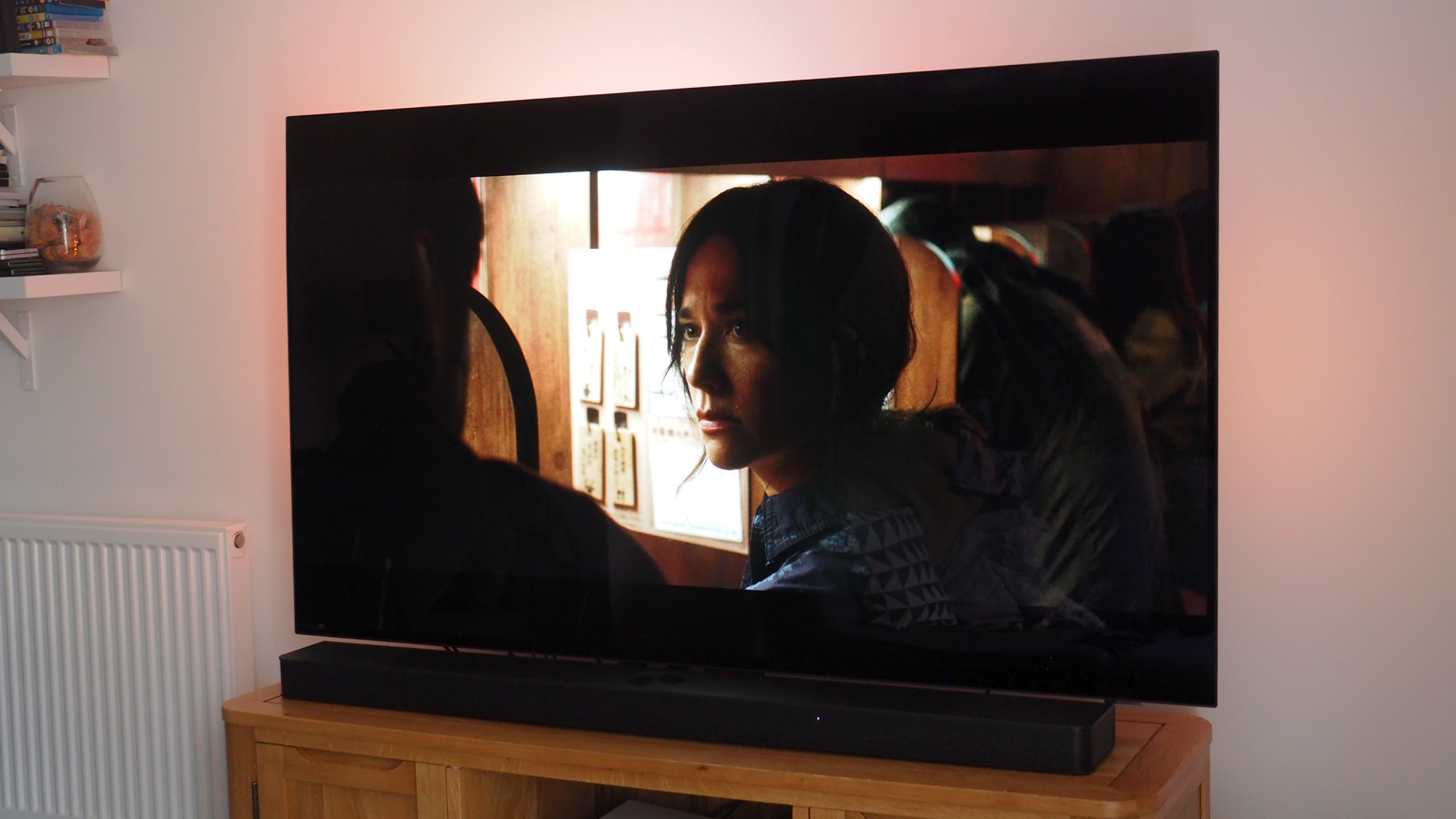
While the OLED 809 can't shout about having an MLA panel like its OLED 909 big brother, I still think what this set offers in terms of picture quality is often astounding. With the 65-inch model setup at home, I've tested it with all manner of media from multiple sources – and with a late-night 4K Blu-ray movie screening of Oppenheimer the results were particularly stunning.
I always find it interesting how different manufacturers' takes on processing is a lesson in nuance: Sony tends to lean towards subtle, lifelike images; LG, which even makes the very panel in this Philips TV, goes for a little more pomp – but is even-handed in its approach; Philips, meanwhile, likes to ignite a few fireworks in its default settings, with brightness and colour uplifted – not to outlandish levels, mind, just with a little more pep than some of its competition.
I think that makes a lot of sense, though, especially with an Ambilight-backed visual experience, which posits the screen in its own field of illumination anyway (unless you opt to switch that feature off, of course). The dual impact of Ambilight and punchy on-screen visuals is immediately enticing. There are plenty of settings to dig into if you want it to deliver a different take though – and it's here where you can apply your own nuance for a much more neutral picture, if you so wish.
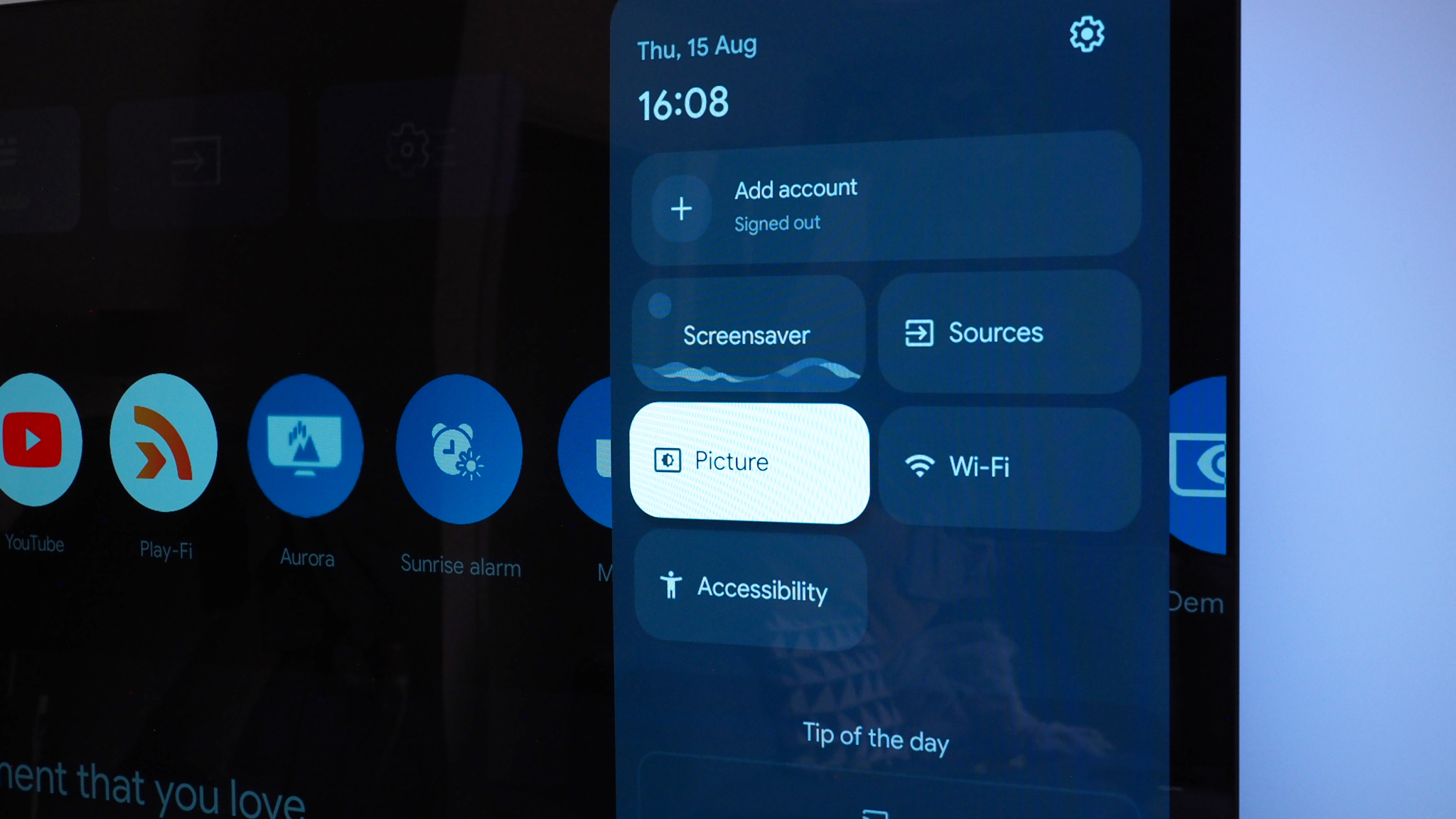
There are a few caveats to the OLED 809's picture quality limits though: whilst watching Apple TV+'s Sunny, for example, I noticed some 'black crush' in shadow areas of the most darkened scenes. There's just a little less dynamic range in the way Philips processes the darkest levels of black. This can also be exaggerated by the Dark Detail Optimisation setting, which attempts to 'preserve dark details in bright ambient light conditions' (and which is often off by default).
Assuming this black crush was down to a limited bitrate owed to the source, I loaded Dune on 4K Blu-ray to check, but there was still some appearance. It's not nearly picture-breaking by any means, but if you're looking for cinematic perfection then the Sony A80L in Filmmaker Mode might suit your black-level cravings better. Not everyone wants that dulled-out look, though, and I've found great cinematic-style compromises with a few settings tweaks that work perfectly on this Philips.
At the opposite end of the scale there's no lack of brightness from this Philips. The company's claim is for 1300 nits peak, which won't be achieved across the full panel, but is just as bright as its main competition, such as the LG C4. Here OLED really shines in being able to deliver a black-to-white contrast ratio that's stunning and without light bleed (which many LCD TVs suffer with). And with Dolby Vision and HDR10, the 809 is able to deliver high dynamic range (HDR) scenes most adeptly.
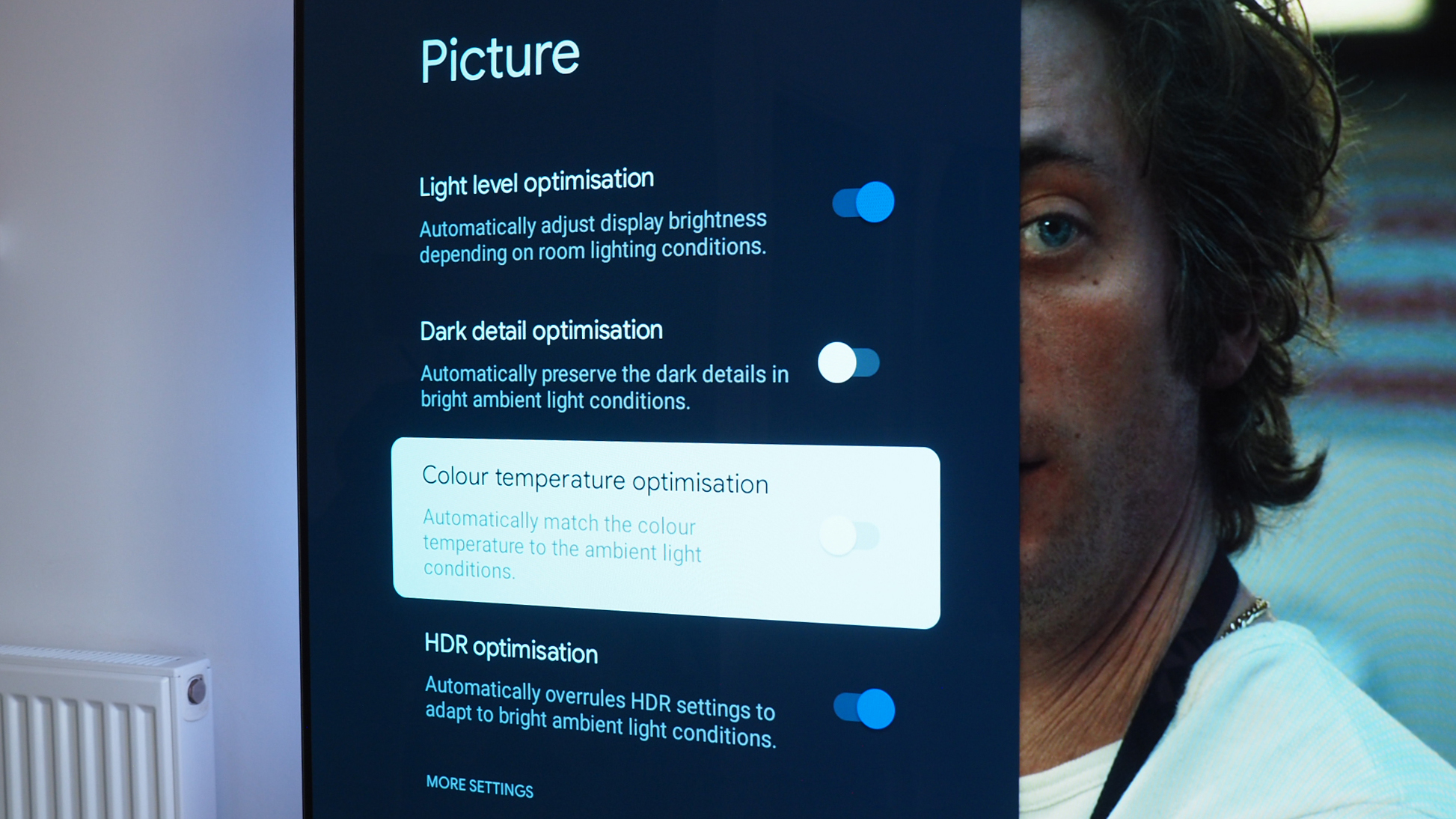
There are also Light Level Optimisation and Colour Temperature Optimisation settings to permit automatic adjustment based on ambient light, which is handy for living room conditions. Activate HDR Optimisation, too, and it'll overrule HDR settings to adapt to bright ambient light conditions – allowing peak highlights to be even brighter. All of these settings have their valid uses, and are easily toggled on or off in the front of the Picture settings panel. However, the HDR Optimisation is constantly reading the room, so when jumping between scenes I often caught a visible 'pass' of processing – and this 'flash' per scene change ultimately led me to switch the mode off.
With those picture settings tweaked to perfection to suit TV, games and cinematic content, I'd also suggest motion-handling tweaks too. Philips likes to add smoothing by default, which can work really well for some content – but can be caught out by others. Tracking of fast-moving subjects – such as the javelin or hammer in athletics at the Olympics, for example – can cause them to 'multiply', which is a problem I've witnessed on other panels, such as the Panasonic MZ2000. Again, tweak accordingly and you'll be able to get a hands-off approach to motion-processing which can suit film or sports better. And once it's set to preference, everything looks great.
Overall, while I've highlighted some minor shortcomings here, in the context of its competitors, I think that the Philips OLED 809 delivers stellar image quality overall. It's bright, it's rich in colour, it's got that Ambilight backing, and with some delicate adjustments the picture is very rewarding. It's able to stand apart from the field in its own way, too, with Ambilight being Philips' shining star.
Philips OLED 809 review: Sound Quality
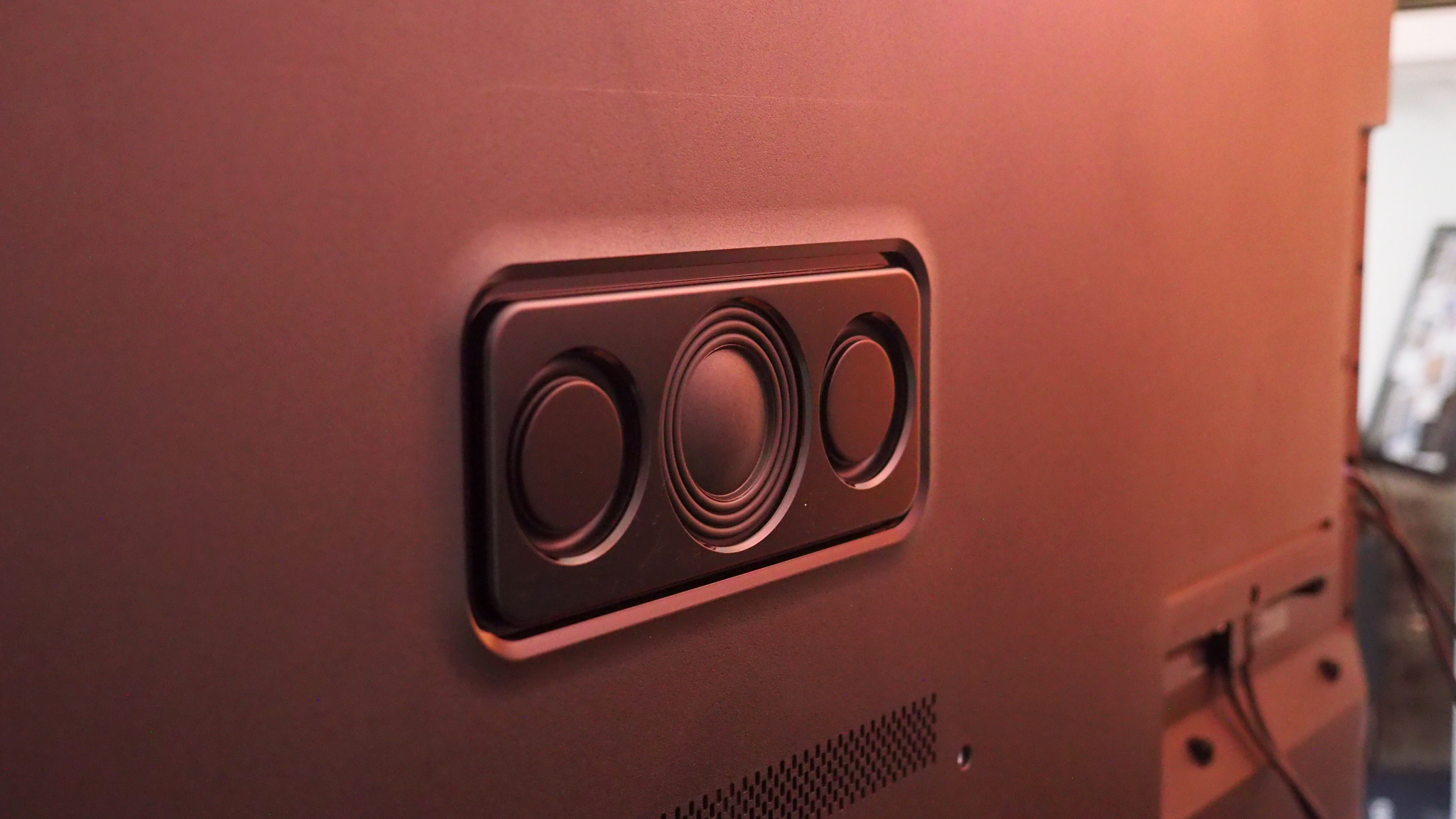
Philips' higher-end TVs have a tie-in with British audio brand Bowers & Wilkins. Not this 809 model, though, which is one shy of that collaboration. But that doesn't mean this set doesn't consider audio somewhat differently to most of its competitors.
With a discreet 2.1 channel setup, the Philips OLED 809 delivers 70W of audio output (50W for the two smaller-scale models), with an integrated woofer to the centre rear of the panel permitting more bass than your average. That's a key point: as many of the best TVs have gotten thinner and thinner over the years, there's little space to insert a decent soundsystem.
Philips' take is that being the thinnest doesn't matter in a TV that's likely to be backed against a wall, so a little extra thickness to accommodate a more powerful system is sensible if you don't intend to buy one of the best soundbars in conjunction with your screen. I'm not saying the 809 delivers soundbar-like levels by any means – but it's got more wallop than LG's equivalent OLED C4 set.
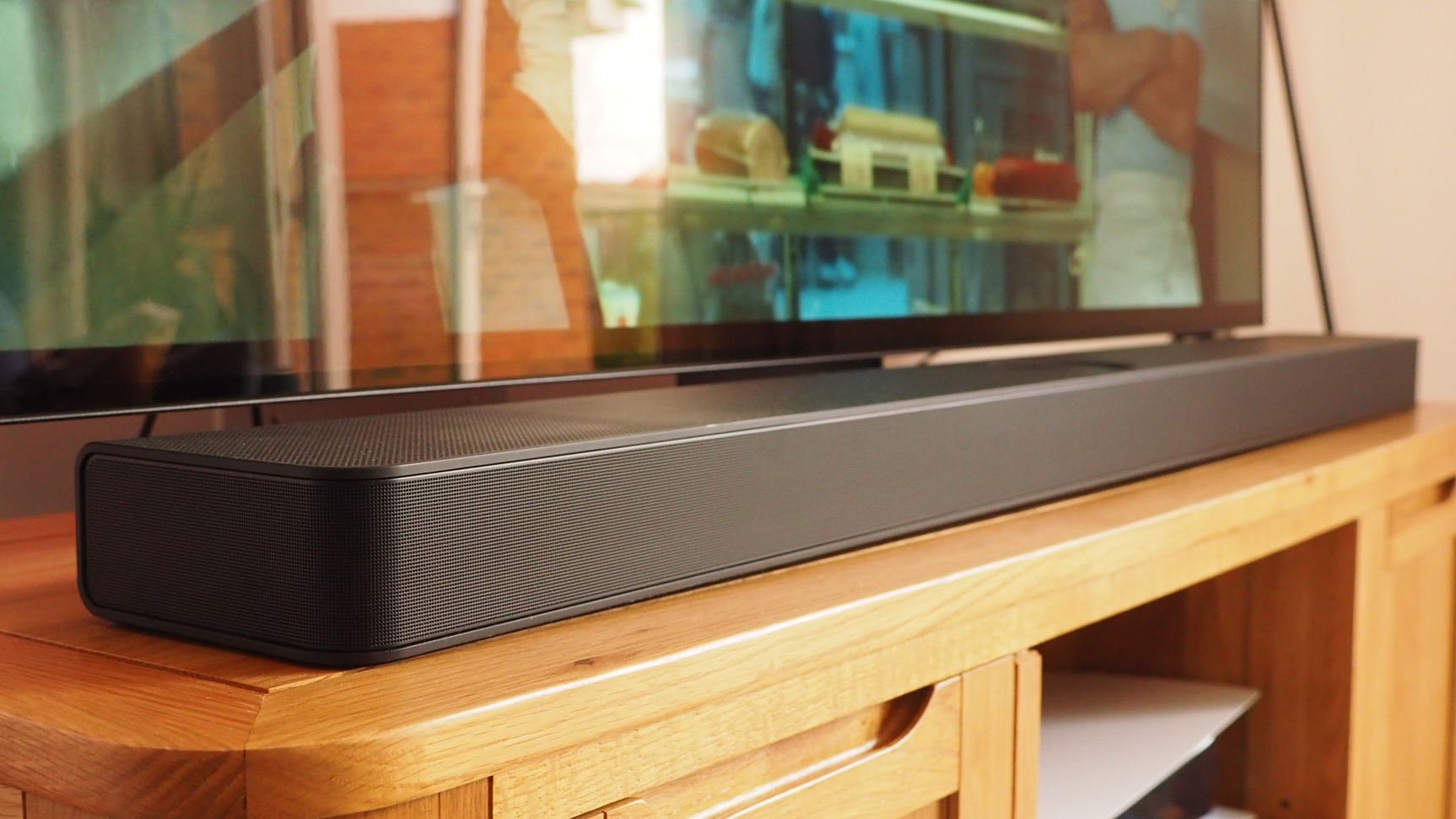
I've mostly been using the Philips with the LG S95TR flagship (which happens to be on review at this time), so I've been spoiled by surround sound. For this review, however, I disconnected the soundbar for a couple of days to get a better understanding of the Philips' native audio – it's good at delivering that 'from the centre' sound, but at this 65-inch scale I do think it lacks outward projection; there's sometimes a sense of the sound being muted, because it's coming from behind the panel and doesn't have as big the forward or sideward projection that I'd like.
That's room for improvement, then, in a sound design that otherwise outsmarts the majority of its rivals. Personally, I think Sony delivers a better soundstage, owing to its Acoustic Surface Audio technology, which uses vibrations through the actual screen to act as a speaker output. Still, Philips manages to deliver a more gutsy system than most, without compromising the design or visual appeal of this set.
Philips OLED 809 review: Design & Setup
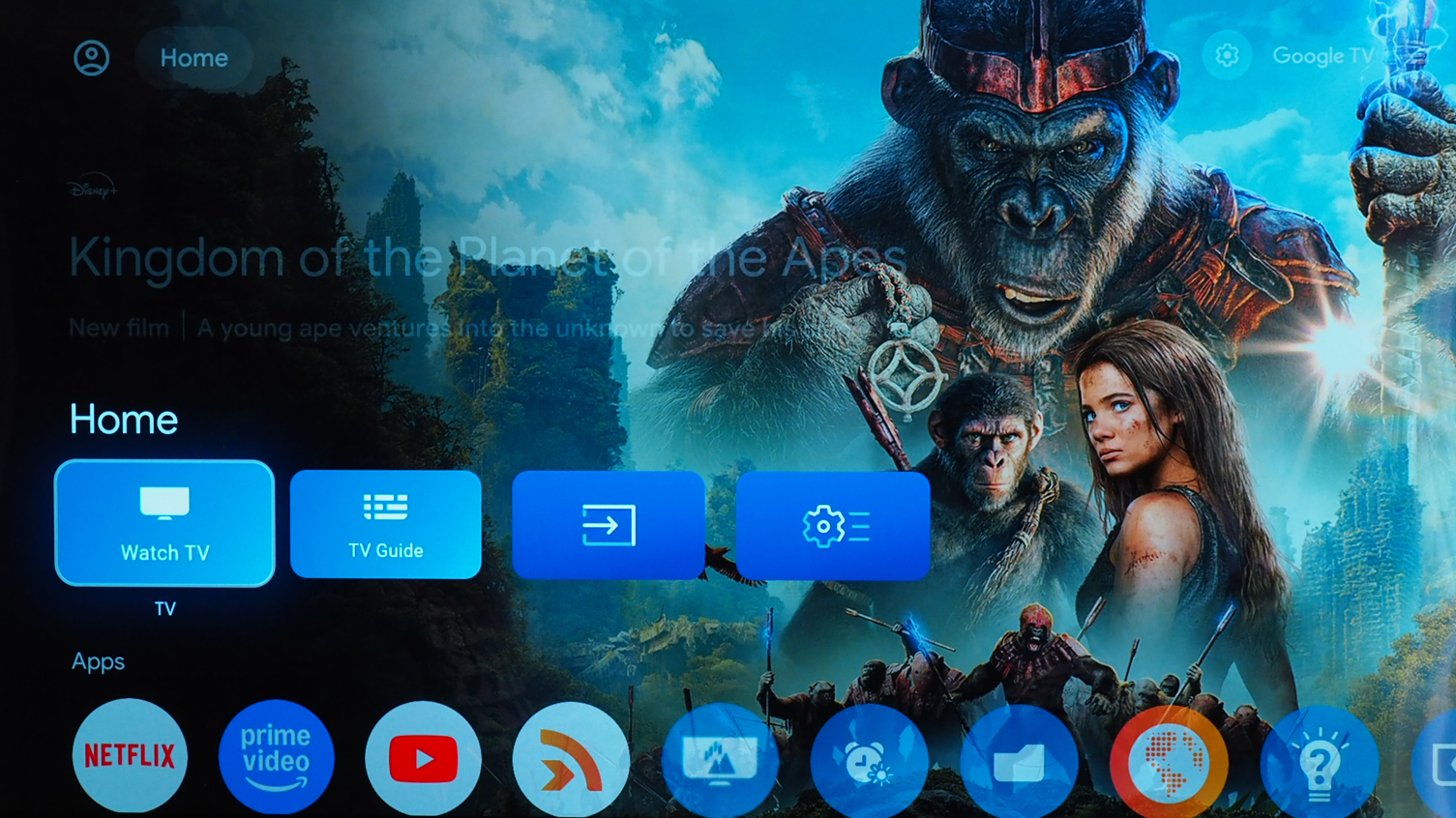
TV design has come a long way over the years, with many panels' front-on visual being little more than the panel itself. It's much the same with the OLED 809's design: there's a barely-visible lip around the edge of the panel that's a couple of millimetres; then within the panel the image begins around 6-8mm from the edges and a tad more from the bottom. You'll not even think to notice.
The 65-inch model comes with a central pedestal stand that's easy to screw into place. It sits at a single raised height, allowing for a soundbar to sit beneath if you have one. The stand swivels to the left or right, and while I doubt many will position the set off-axis, it does make reaching the HDMI ports around the rear far easier.
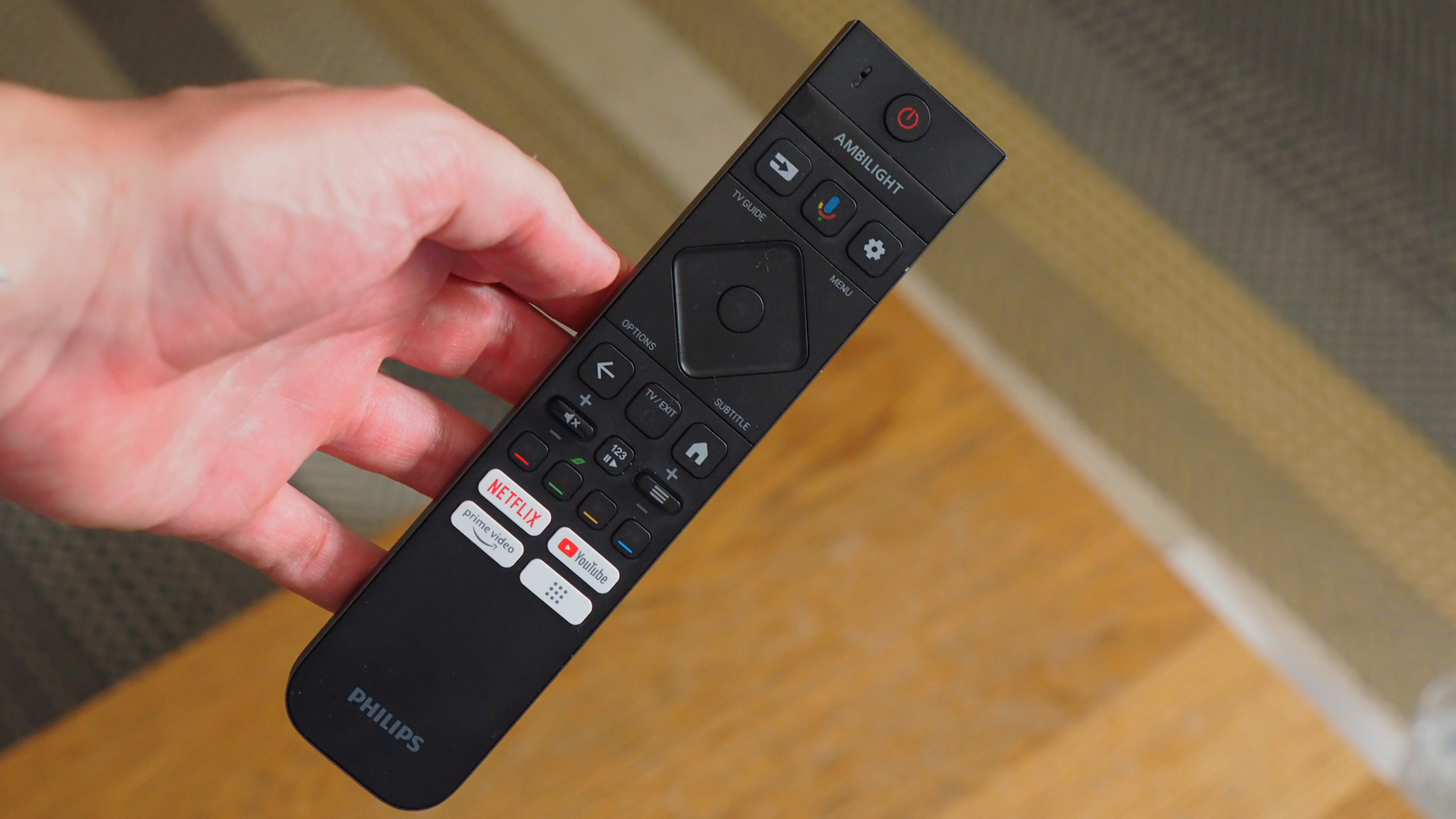
There's more to design than just the physical, of course, and it's here where the Philips OLED 809 is a bit of a mixed bag. It runs Google TV, which I don't find is especially well integrated here. Certain button-presses on the included remote, for example, will be met by a "Feature is not available in current mode" message, as Philips' menus clash with the default Google ones. Other makers, such as Panasonic, have fully integrated systems, such as the Z95A partnering with Amazon's Fire TV.
The Philips remote is a lovely piece of design though. It features illuminating Netflix, YouTube, Prime Video and a further apps button (the last of which is "not available" either), while the also-illuminating volume and channel up/down buttons are raised toggles for really nice tactile adjustment.
It's rare to have such a nicely designed controller bundled with a TV these days, which only makes the sometimes disconnect with Google TV all the more irksome. There's no local/UK catch-up apps, either, so BBC iPlayer and whathaveyou will need to be sourced via an alternative device – worth noting in case you're depending on the TV's native system for all your catch-up viewing.
Philips OLED 809 review: Verdict
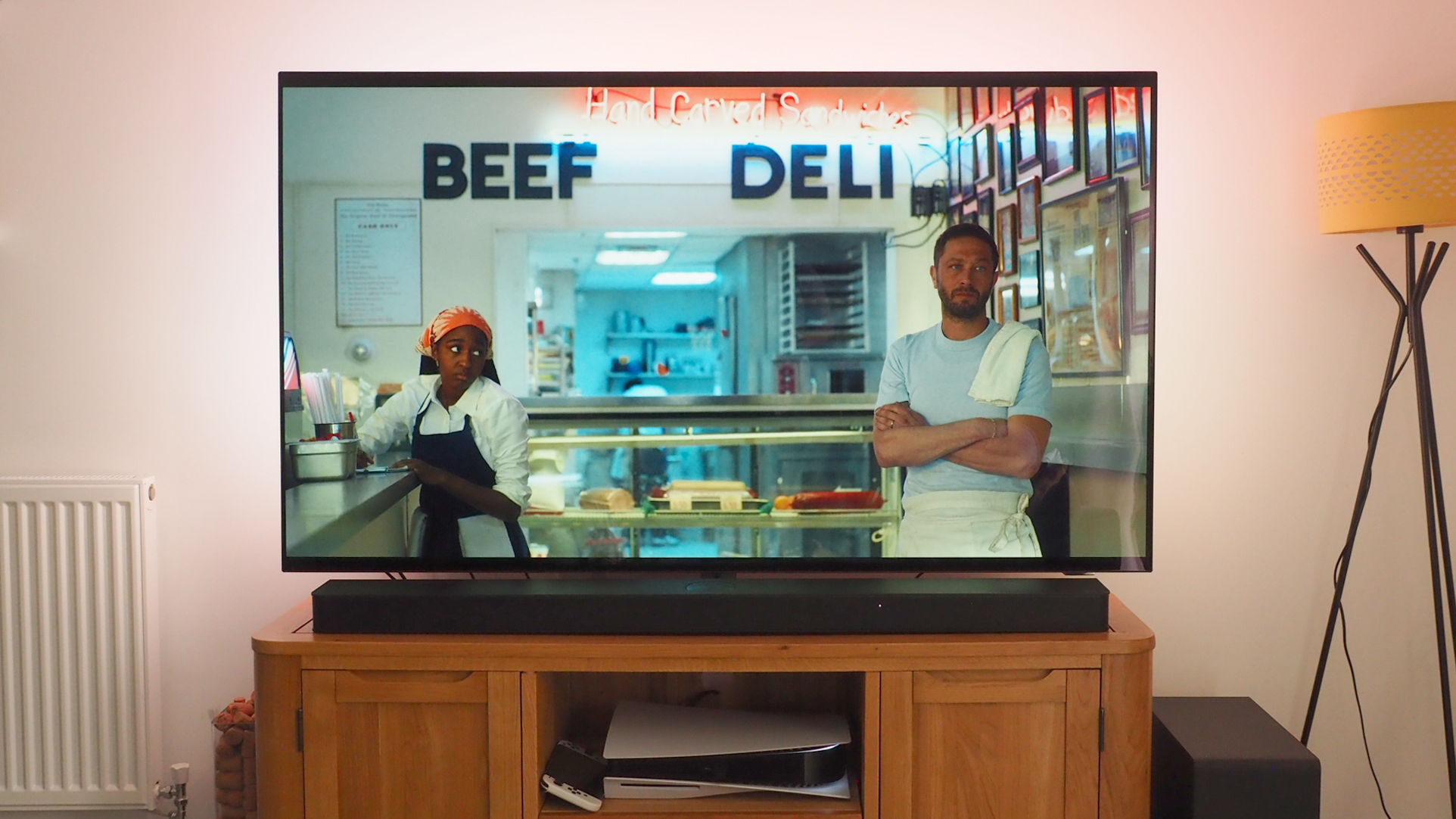
Overall, the Philips OLED 809 is a well-appointed and competitively priced TV that takes on its main mid-tier OLED competition and, in many cases, matches them for quality – while in other areas, such as sound, it betters most of them. Add the fun and immersion of Ambilight and this Philips gains its unique edge.
There are some minor misgivings – Google TV's integration isn't on point, there are no local/UK catch-up apps, and it's not the best-in-class with black-level nuance – but when it comes to delivering impactful OLED image quality that stuns straight out of the box, this Ambilight set has oodles of appeal.
Also consider
It's a competitive game, this OLED market. There's no shortage of nearby rivals to consider: the LG C4 delivers an even more even-handed picture and far better operating system integration, but lacks the Ambilight and the sound bolstering of the Philips. The Sony A80L, meanwhile, has unparalleled picture quality in this mid-to-high OLED category, especially in black levels, which cinephiles will love. Or there's the Panasonic MZ1500's "utterly convincing picture quality" as a similar alternative – but the Philips' Ambilight adds preference over this model and, arguably, any of the others listed above.







